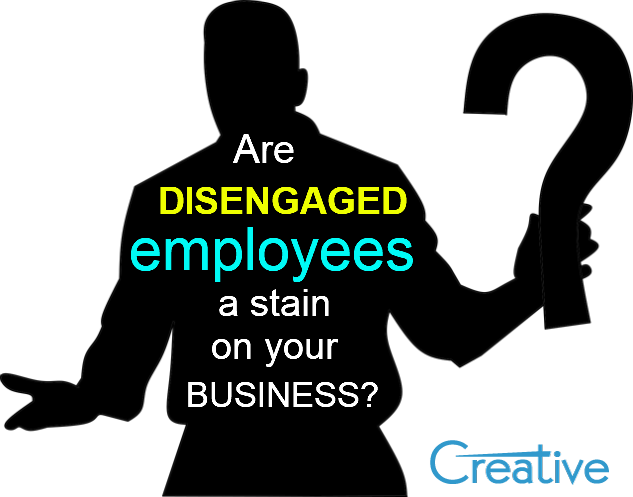
A Social revolution in People Development

Are Disengaged Employees really bothered? Then why do Employers need to bother about them?
Are disengaged employees a stain on your business?
There are a lot of statistics and reports available criticizing the disengaged employee as a stain on the organizations, something to be loathed and something to be got relieved of as soon as possible. Some articles have even openly addressed to the disengaged employee as ‘bad employee’. But is this by anyway fair to the disengaged employees? Is it fair to say that disengaged employees are not committed to either their own or their organization’s growth and success? In spite of everything, though engagement and commitment are correlated, they are still distinct concepts. It may also be time to define disengagement and underperformance as two separate theories.
So, do disengaged employees really care?
While some do and some don’t.
However, in order to take full advantage of the opportunity offered by disengaged employees, we should presume that most employees do actually really care about some facet of their work.
1. Some will care about the quality of the work they do
2. Some will care about their own image in the organization.
3. Some employees will care about their own personal career,
4. Some will care about their co-workers or certain members of the team they work with.
5. Some employees simply just care about being respected and valued for the work they do.
What do you learn from your disengaged employees?
The key issue for organizations nevertheless is to understand the element of care among disengaged employees and learn some key lessons.
a) Disengaged employees are emotionally charged as they care about what they feel they aren’t getting in return for their valuable time, efforts, skills, expertise and intellect at work.
b) Salary will only help in turning up of employees at work, but won’t be enough to keep people engaged.
c) Every individual employee has his own definite requirements from his work besides the salary and benefits package the job offers.
d) There is a personal blend of individual requirements like development, growth, career enhancement, respect, authority, autonomy, work interest, contribution, and value and so on.
e) Organizations can learn an array of important lessons ranging from caring for, communicating with and examining disengaged employees.
f) Creative Social Intranet enables clients to learn what is motivating engagement and disengagement to understand the prevailing culture in each team.
g) This puts further light on what it takes for individual success, targeting leadership and team development and training.
h) Creative Social Intranet gives you the chance to run surveys of your design for engagement survey responses.
i) You can learn the exit story of your employees and get concurrent feedback on the real experiences of your disengaged employees.
But maybe the feedback from disengaged employees be all negative and cynical!
Yes, maybe it is.
Yet it can also sometimes be very real and sometimes emotional too. Even if it is distrustful, it offers a valuable sneak peek into how people feel and can give a rich source of insights to the data created by the employee engagement survey.
So, even if we learn from disengaged employees, why should we care for them?
• The main thing here is that many of your disengaged employees will be looking for new employment to fulfil the desires they aren’t attaining in their current job.
• Also if u think they aren’t going to be re-engaged then it is best for both the employee and the organization to part ways.
• However, it is important for you to care about them and provide them with the required training and support so they can search for an alternative job with a clear mind.
• Time and again disengaged employees are left alone to seek out an escape.
• The problem here is that they are many times caught up in negative thinking loop and thus search for a job with all the wrong reasons.
• They are trying to escape their own personal prison instead of positively searching for their next opportunity.
• The result of this ‘trying to escape’ is that it often shows off into interviews. It is worsened by the possible feeling of underachievement by the disengaged employee.
• She/he believes that the current job did not endow with the experience and career-boosting opportunities it should have and, hence, his/her self-efficacy is depressing.
• As an outcome, she/he does not suppose to be successful in any job interview and is expected to perform poorly.
• The disengaged employee feels trapped in a job they don’t like and don’t want to stay in either.
• At the end, the organization is left with an increasingly disengaged employee ratio and all the negatives that it brings with it.
What steps will you take to care for your disengaged employees and to learn from them?
1) Support and train and also develop your disengaged employees.
2) Bring them back into the workforce as an active valuable and contributing member.
3) Some will re-engage and stay on with you as a valuable employee.
4) Others will feel better about quitting and will perform better in their efforts to leave coz after all they are seeking is an opportunity and not an escape.
5) ‘Remember your organization will develop a reputation as a caring employer’.
6)At the End “Everyone is a winner”.
Categories: